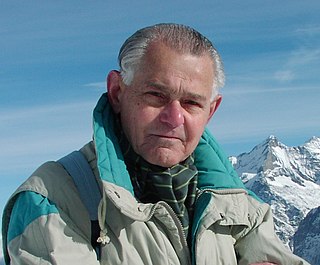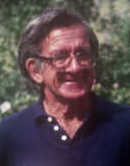Related Research Articles

Kangchenjunga, also spelled Kanchenjunga, Kanchanjanghā and Khangchendzonga, is the third-highest mountain in the world. Its summit lies at 8,586 m (28,169 ft) in a section of the Himalayas, the Kangchenjunga Himal, which is bounded in the west by the Tamur River, in the north by the Lhonak River and Jongsang La, and in the east by the Teesta River. It lies in the border region between Nepal and Mangan district, Sikkim state of India, with three of the five peaks, namely Main, Central and South, directly on the border, and the peaks West and Kangbachen in Nepal's Taplejung District.

The International Mountaineering and Climbing Federation (UIAA) recognises eight-thousanders as the 14 mountains that are more than 8,000 metres (26,247 ft) in height above sea level, and are considered to be sufficiently independent of neighbouring peaks. There is no precise definition of the criteria used to assess independence, and, since 2012, the UIAA has been involved in a process to consider whether the list should be expanded to 20 mountains. All eight-thousanders are located in the Himalayan and Karakoram mountain ranges in Asia, and their summits are in the death zone.

Gasherbrum II ; surveyed as K4, is the 13th highest mountain in the world at 8,035 metres (26,362 ft) above sea level. It is the third-highest peak of the Gasherbrum massif, and is located in the Karakoram, on the border between Gilgit–Baltistan, Pakistan and Xinjiang, China. The mountain was first climbed on July 7, 1956, by an Austrian expedition which included Fritz Moravec, Josef Larch, and Hans Willenpart.
Peter Boardman was an English mountaineer and author. He is best known for a series of bold and lightweight expeditions to the Himalayas, often in partnership with Joe Tasker, and for his contribution to mountain literature. Boardman and Tasker died on the North East Ridge of Mount Everest in 1982. The Boardman Tasker Prize for Mountain Literature was established in their memory.

Alan Hinkes OBE is an English Himalayan high-altitude mountaineer from Northallerton in North Yorkshire. He is the first British mountaineer to claim all 14 Himalayan eight-thousanders, which he did on 30 May 2005.

Douglas Keith Scott was an English mountaineer, noted for being on the team that made the first ascent of the south-west face of Mount Everest on 24 September 1975. In receiving one of mountaineering's highest honours, the Piolet d'Or Lifetime Achievement Award, his personal style and climbs were described as "visionary".

Joe Tasker was a British climber, active during the late 1970s and early 1980s. He died while climbing Mount Everest.

Francis Sydney Smythe, better known as Frank Smythe or F. S. Smythe, was an English mountaineer, author, photographer and botanist. He is best remembered for his mountaineering in the Alps as well as in the Himalayas, where he identified a region that he named the "Valley of Flowers", now a protected park. His ascents include two new routes on the Brenva Face of Mont Blanc, Kamet, and attempts on Kangchenjunga and Mount Everest in the 1930s. It was said that he had a tendency for irascibility, something some of his mountaineering contemporaries said "decreased with altitude".
Wojciech Kurtyka is a Polish mountaineer and rock climber, one of the pioneers of the alpine style of climbing the biggest walls in the Greater Ranges. He lived in Wrocław up to 1974 when he moved to Kraków. He graduated as engineer in electronics. In 1985 he climbed the "Shining Wall," the west face of Gasherbrum IV, which Climbing magazine declared to be the greatest achievement of mountaineering in the twentieth century. In 2016, he received the Piolet d'Or for lifetime achievement in mountaineering.
Andrew James Lock OAM is an Australian high-altitude mountaineer. He became the first, and still remains the only, Australian to climb all 14 "eight-thousanders" on 2 October 2009, and is the 18th person to ever complete this feat. He climbed 13 of the 14 without using bottled oxygen, only using it on Mount Everest, which he has summited three times. He retired from eight-thousander climbing in 2012.
Andy Cave is a British mountaineer, mountain guide, and motivational speaker. He was nominated for the Piolet d'Or for his first ascent of the North Face of Changabang in 1997, and won the Boardman Tasker Prize for Mountain Literature in 2005.

Trevor Hyam Braham was a British Himalayan explorer and mountaineer, mostly active during the mid-20th century.
Colonel Narendra Kumar, PVSM, KC, AVSM, FRGS was an Indian soldier and mountaineer. He is known for his expeditions across various mountain ranges such as the Himalayas and Karakorams, and respective subranges such as the Pir Panjals and Saltoro Mountains. His reconnaissance efforts on the Siachen glacier were key to the Indian Army's reclamation of the forward posts of the glacier in Operation Meghdoot in 1984. He was the deputy leader of the first successful Indian Mount Everest expedition in 1965.

Norman David Hardie was a New Zealand climber who was one of the climbers on the 1955 British Kangchenjunga expedition who first reached the summit of the 8,586-metre (28,169 ft) mountain, the third-highest mountain in the world.

Nirmal Purja is a Nepal-born naturalised British mountaineer and a holder of multiple mountaineering world records. Prior to taking on a career in mountaineering, he served in the British Army with the Brigade of Gurkhas followed by the Special Boat Service (SBS), the special forces unit of the Royal Navy. Purja is notable for having climbed all 14 eight-thousanders in a record time of six months and six days with the aid of bottled oxygen. He was also the first to reach the summits of Mount Everest, Lhotse and Makalu within 48 hours. In 2021, Purja, along with a team of nine other Nepalese mountaineers, completed the first-ever winter ascent of K2.
Roger Baxter-Jones, was a British mountaineer, skier and alpine guide. He was an early pioneer in Himalayan alpine style ascents of eight-thousander mountains, and a guide in Chamonix, noted for his competence and vast experience. Paul Nunn wrote "One of Britain's leading mountaineers, a member of the ACG Committee for years, and certainly one of the strongest ever, he was a top off-piste skier, and a mountaineer of impeccable judgment, able to guide on routes of the highest standards with a considerable margin."
References
- ↑ Child, Greg (1998). Thin Air: Encounters in the Himalayas. Mountaineers Books. p. 154. ISBN 9781594856907.
- ↑ Dean, Steve (30 May 2019). "Kangchenjunga 1979". Boardman & Tasker. Retrieved 22 October 2020.
- ↑ Steffen, Will (2010). Himalayan Dreaming: Australian mountaineering in the great ranges of Asia, 1922–1990. Canberra: Australian National University Press. ISBN 9781921666162 . Retrieved 22 October 2020.
- 1 2 Nyka, Jozef (1984). "In Memoriam". The Himalayan Journal. 40 (26): 45. Retrieved 22 October 2020.
- ↑ Bettembourg, Georges; Brame, Michael (1981). The White Death. Reynard House. p. 309. ISBN 978-0932998057.